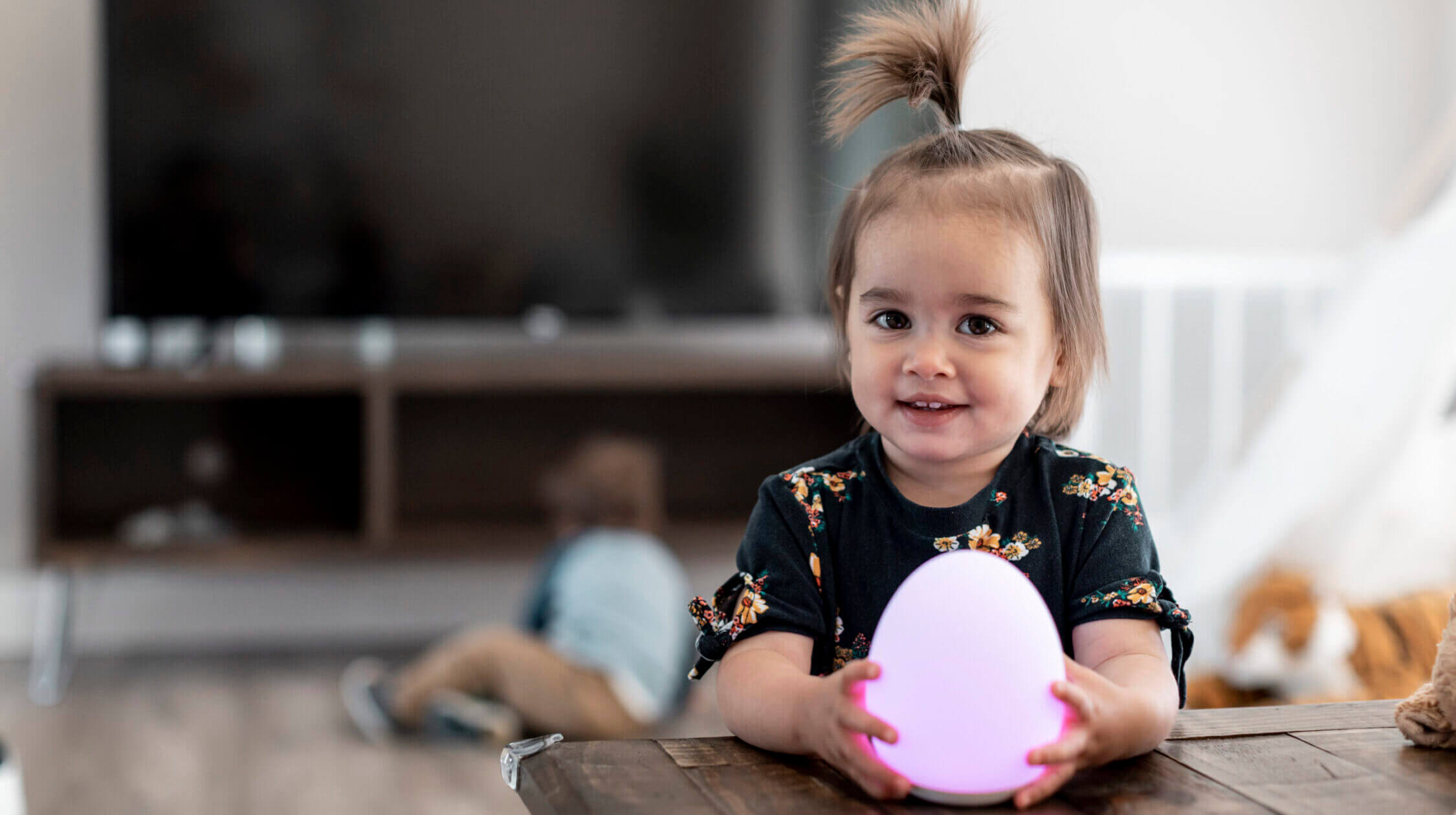Baby night lights can be a great help in keeping your baby safe and calm. When using a baby night light, it's important to use it in ways that don't wind up causing unintended consequences by keeping your baby awake. Here are some best practices for new parents.
1. Don't light the sleeping area, do light near it.
Too much light in the sleeping area can keep any baby awake, even if it is light that is dim and designed to be less disruptive. The trick is to light areas near where your baby sleeps, so you can see as you come and go. With the right placement, opening the door can give you functional light in a bedroom even if the light is in the hallway, allowing the baby to sleep peacefully but giving you the benefit of the extra light when you get up at night. If you do feel the need to put it in the room, put some distance between the light and the baby's cradle.
2. Do try out a light in the bedroom as your baby grows.
Older infants and toddlers sometimes develop nighttime fears, and in those cases, a night light is incredibly helpful. Weighing the disruption caused by fear and anxiety against the small potential disruption from a dim light near the floor, it's easy to see why the light is useful. It's also true that as children grow and sleep more regularly, the light from something like a night light becomes less disruptive. If your baby does not develop nighttime fears, then it's probably still good to leave the light where it was.

3. What color lights help babies sleep?
Blue light is disruptive to everyone's sleep cycles, not just that of babies and small children. It's never a good idea to use it in a night light for that reason. Blue light is such a known issue that it's the reason why many medical professionals recommend leaving the phone outside your bedroom at night or turning it off completely. It's also why phones and other devices with screens have started incorporating a night time mode that shifts the screen's tint to a yellow-orange base instead of blue. Red or orange light, especially when it is dim, is the least disruptive to sleep patterns.
4. Do buy a low-wattage night light.
The best way to make sure you're following the recommendation to get a dim light is to buy low wattage. Traditional incandescent bulbs for night lights tend to be around four to seven watts. One of the most important baby night light tricks to master is converting that for LED lights, which are becoming more common.
A single watt LED can put out as much light as a 10w traditional bulb, anything over that is way too bright, and even a one watt LED will need a diffuser or shade to dim and direct its output. The best way to avoid overshooting? Look for LED lights with a wattage equivalent or look for lumen output and match it to a traditional incandescent bulb.
5. Consider adjustable lights.
Baby night lights with active and inactive settings can help quite a bit when it comes to the light you need to see your baby and the darkness your baby needs to maintain a healthy sleep pattern. A multi-setting touch control baby night light can be turned up or down with a single tap, making it easy to light your work area when you're feeding or changing the baby. Once you're done, touch it again to dim things or even turn it off for natural nighttime darkness.
Still considering your choices?
It's worth exploring whether you really need a night light, but they are popular for a reason and there's no problem with using them if it's done with care. The key is to keep in mind how much light you're adding to the baby's immediate vicinity, and to plan ways to minimize it. A well-placed table or night stand can help a lot there, making it easy to put together just the right light and furniture orientation for your space.




Leave a comment